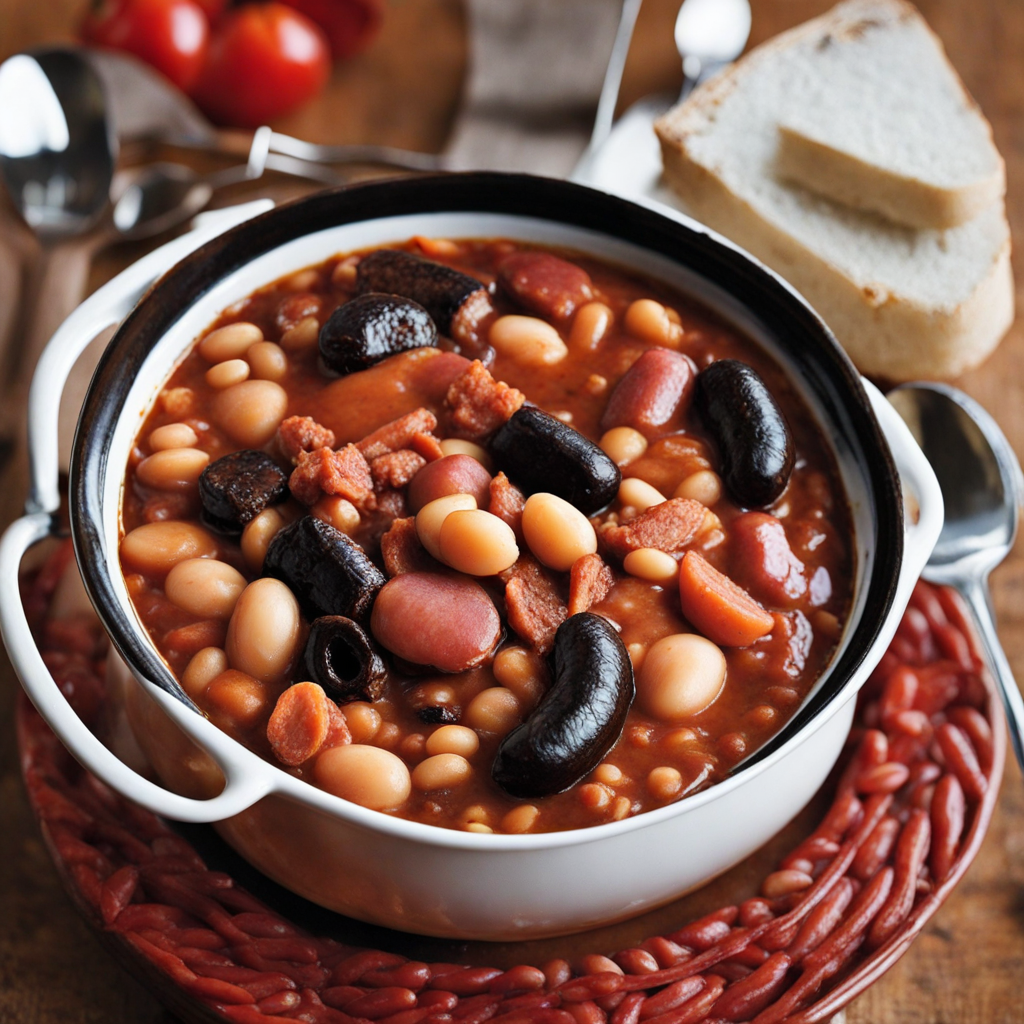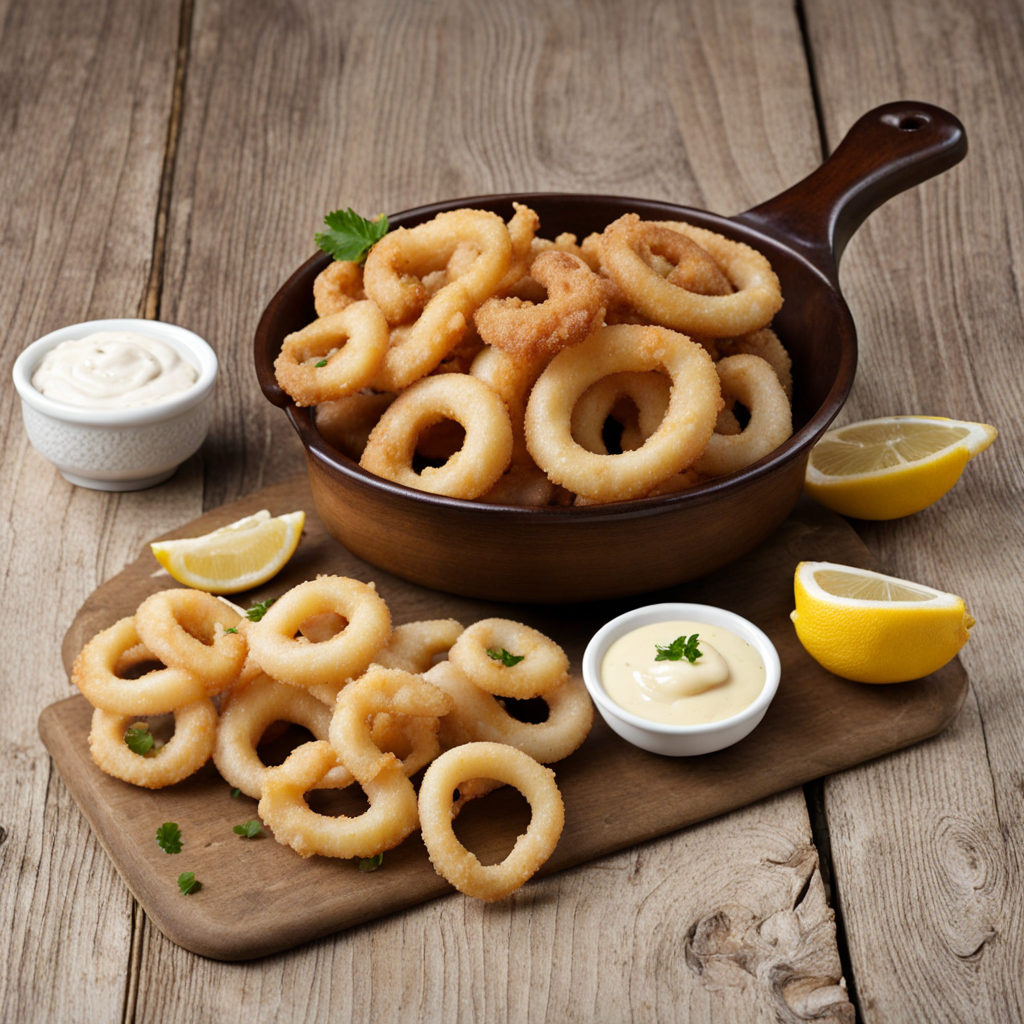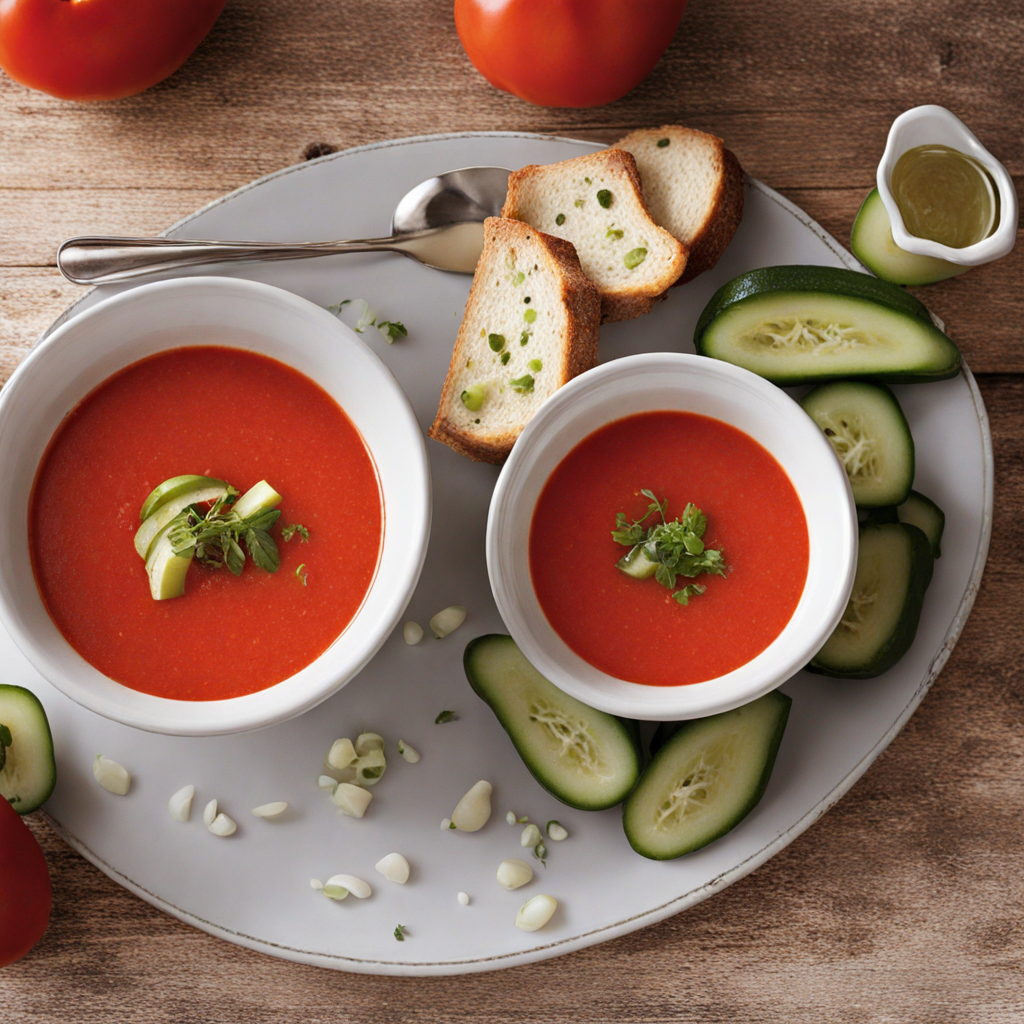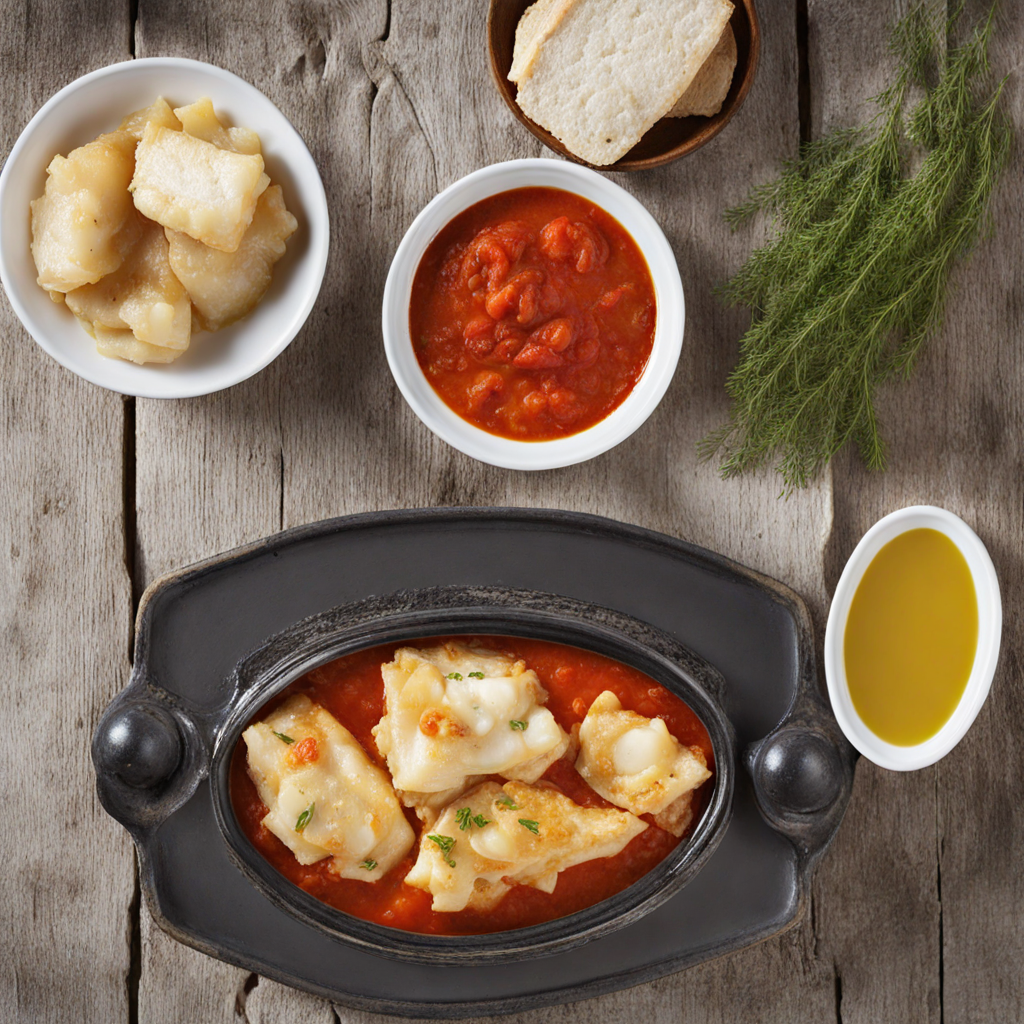Tortilla Española
Tortilla Española, also known as Spanish omelette, is a classic dish that beautifully showcases the simplicity and richness of Spanish cuisine. At its core, this dish is made with just three key ingredients: eggs, potatoes, and onions. The potatoes are typically sliced thinly and sautéed until tender, while onions add a sweet contrast, balancing the savory profile. The mixture is then combined with beaten eggs, creating a luscious, custard-like texture that binds the ingredients together, resulting in a comforting and hearty dish that can be enjoyed at any time of the day. What sets Tortilla Española apart is its cooking method. Traditionally, the mixture is cooked in a skillet, allowing the edges to become golden and slightly crisp while the center remains soft and creamy. Once the bottom is perfectly set, the omelette is flipped to cook the other side, a technique that requires a bit of skill and practice, but the result is a beautifully round, fluffy tortilla. The final dish can be served warm or at room temperature, often sliced into wedges for easy sharing, making it a popular choice for tapas or a casual meal with friends and family. The flavor of Tortilla Española is both satisfying and versatile. The sweetness of the caramelized onions pairs wonderfully with the earthiness of the potatoes, while the eggs provide a rich, silky mouthfeel. It can be enjoyed on its own or accompanied by crusty bread, fresh salad, or a dollop of alioli (a garlic mayonnaise) for added depth. This dish not only represents the heart of Spanish culinary tradition but also invites a world of variations, with some adding ingredients like peppers, herbs, or chorizo, allowing one to explore endless flavor possibilities within this iconic Spanish staple.
How It Became This Dish
The History of Tortilla Española Tortilla Española, also known as Spanish omelette, is a beloved dish that has become synonymous with Spanish cuisine. Its simple yet rich ingredients—eggs, potatoes, and olive oil—come together to create a dish that is both humble and grand, reflecting the heart and soul of Spain itself. To understand the significance of Tortilla Española, it is essential to delve into its origins, cultural context, and evolution over the years. #### Origins: A Culinary Journey The origins of Tortilla Española can be traced back to the early 19th century, a time when Spain was undergoing significant social and economic change. Although egg-based dishes have been a part of Mediterranean cuisine for centuries, the specific combination of potatoes and eggs in a tortilla is believed to have emerged in the region of Navarra in northern Spain. According to popular lore, the dish was created in the 1800s by a local farmer who sought to feed his family with simple, accessible ingredients. This tale, while charming, lacks concrete historical evidence, but it speaks to the ethos of Spanish cooking: practicality, resourcefulness, and the celebration of local produce. The potato, introduced to Europe from the Americas in the late 16th century, became a staple in Spanish diets, particularly among the peasantry. The adaptability of the potato allowed it to flourish in various regional cuisines, and it eventually found its perfect partner in the ubiquitous egg. By the mid-19th century, the tortilla had made its way into Spanish homes and taverns. It was often served as a tapa, a small dish meant for sharing, highlighting the communal aspect of Spanish dining. The tortilla's ability to be prepared in large quantities made it an ideal dish for social gatherings, reinforcing its role as a symbol of Spanish hospitality. #### Cultural Significance: A National Treasure As the tortilla gained popularity, it began to transcend its humble origins, becoming a staple of Spanish culture. It is more than just a dish; it is a symbol of national identity. In Spain, the tortilla is often associated with home cooking, evoking memories of family gatherings and traditional meals. Each family has its own recipe, passed down through generations, creating a deep emotional connection to the dish. The cultural significance of Tortilla Española can also be seen in its representation of regional pride. Variations exist throughout the country, with each region claiming its own unique version. In Andalusia, for instance, you might find a tortilla flavored with chorizo or peppers, while in Catalonia, a more elaborate version known as "truita" may include additional ingredients like herbs or cheese. Such variations reflect the diverse culinary landscape of Spain and highlight the creativity of its people. The tortilla's role in Spanish gastronomy is further emphasized in its inclusion in festivals and celebrations. During national holidays, such as La Tomatina or Semana Santa, it is common for families to prepare large quantities of tortilla to share with friends and neighbors. The dish embodies the spirit of togetherness, making it a centerpiece of communal festivities. #### Development Over Time: From Home to Bistro Throughout the 20th century, as Spain underwent immense political and social changes, the tortilla began to evolve in both preparation and presentation. The post-Civil War era saw a shift in culinary practices, as people sought comfort in traditional foods during times of hardship. The tortilla, with its affordable ingredients, became a staple for families struggling to make ends meet. The dish also gained a foothold in the burgeoning restaurant scene, where chefs began to elevate the tortilla from a humble home-cooked meal to a gourmet offering. The 1980s and 1990s marked a renaissance in Spanish cuisine, with chefs like Ferran Adrià pushing culinary boundaries. While some modern interpretations strayed from traditional methods, the classic Tortilla Española remained a mainstay, proving its resilience in a rapidly changing culinary landscape. The tortilla's international popularity surged during this time, thanks in part to the global spread of Spanish culture. Tapas bars began to emerge in cities around the world, introducing people to the joys of sharing small plates, with Tortilla Española often taking center stage. Its versatility—served warm, at room temperature, or even cold—made it an attractive option for various dining occasions. In recent years, the rise of food tourism and the popularity of Spanish cuisine have further solidified the tortilla's place in global gastronomy. Culinary schools and cooking workshops often feature classes dedicated to mastering the art of the tortilla, highlighting its importance in both professional and home kitchens. #### Modern Interpretations: Innovation Meets Tradition Today, Tortilla Española continues to inspire chefs and home cooks alike, leading to innovative interpretations that honor its roots while embracing modern culinary trends. From gourmet versions adorned with truffle oil to vegan adaptations made with chickpea flour, the tortilla has proven to be a canvas for creativity. In Spain, food festivals dedicated to the tortilla are held, where chefs compete to create the best version of this iconic dish. Such events reinforce the tortilla's status as a national treasure, celebrating the rich culinary heritage that it represents. Moreover, the tortilla has found its way into contemporary food discourse, often featured in discussions about sustainability and local sourcing. As awareness of food systems grows, so does the appreciation for traditional dishes like Tortilla Española that utilize simple, regional ingredients. #### Conclusion: A Culinary Icon In conclusion, Tortilla Española is more than just a dish; it is a reflection of Spanish culture, history, and identity. From its humble beginnings in the kitchens of Navarra to its status as a culinary icon, the tortilla has woven itself into the fabric of Spanish life. Its ability to adapt and evolve while maintaining its traditional roots speaks to the resilience and creativity of Spanish cuisine. As we enjoy a slice of Tortilla Española, we partake in a culinary tradition that has stood the test of time, embodying the flavors, stories, and shared experiences of the Spanish people. In every bite, we connect with the past, celebrate the present, and look forward to the future of this beloved dish.
You may like
Discover local flavors from Spain







